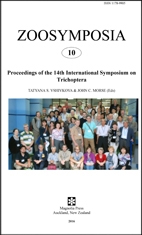Abstract
The channels of almost all rivers in Japan have been fixed through the construction of artificial riverbanks to control flooding. In addition, to prevent flooding, maintenance works including the removal of gravel from the channels must be conducted regularly. As a result, the level of most riverbeds within river channels has been lowered, and riverbanks have become far steeper. These large changes to riverside environments have significantly altered the type of habitats available to plants, causing the level of vegetation growth on the riverside to increase. To improve such flood control methods, a new excavation project has commenced in the central area of the Chikuma-gawa River basin, under the auspices of the newly commissioned “Government Nature Restoration Project”. As part of this project, a large shallow environment approximately 1 km in length along the river’s course was newly created. We have attempted to evaluate the impact of this project and the subsequent environmental response, focusing on two dominant benthos, Stenopsyche marmorata and Isonychia japonica, particularly the dynamics of their genetic structure and diversity. Following the excavation of riverbanks and channels, the population density reached the same levels as at the control site, in a relatively short period of time. This is because the research site was limited to a small area within the large-scale river basin, with robust habitats located both upstream and downstream. The two target species in this study represent typical dominant species in the central basin of this river, and occur at high density. In other words, they could be transferred smoothly from the surrounding robust habitats, especially by the flow from upstream.
References
Allan, J.D. & Flecker, A.S. (1993) Biodiversity conservation in running waters. Bioscience, 43, 32−43.
http://dx.doi.org/10.2307/1312104Ashida, K., Egashira, S. & Nakagawa, H. (2008) River Morphodynamics for 21stCentury. Kyoto University Press, Kyoto, 273 pp.
Dempo, J., Okamura, T., Horioka, K. & Yonemoto, M. (2006) Relationship between channel disturbance and the riparian forest structure in lowlands of Hokkaido, Japan. Ecology and Civil Engineering, 9, 3−20. [in Japanese with English abstract]
http://dx.doi.org/10.3825/ece.9.3Kato, Y., Morii, Y. & Tojo, K. (2013) Molecular phylogeographic analysis of East Asian cryptoperlan stoneflies (Insecta: Plecoptera, Peltoperlidae). Limnology, 14, 179–194.
http://dx.doi.org/10.1007/s10201-012-0395-3Marstone, R.A., Girel, J., Pautou, G., Piegay, H., Bravard, J.P. & Arneson, C. (1995) Channel metamorphosis, floodplain disturbance, and vegetation development: Ain River France. Geomorphology, 13, 121−131.
http://dx.doi.org/10.1016/0169-555x(95)00066-eMiller, J.R., Schulzt, T.T., Hobbs, N.T., Wilson, K.R., Schrupp, D.L. & Baker, W.L. (1995) Changes in the landscape structure of a southeastern Wyoming riparian zone following shifts in stream dynamics. Biological Conservation, 17, 371−379.
http://dx.doi.org/10.1016/0006-3207(94)00049-vMiyairi, K. & Tojo, K. (2007) Biology of the mayfly Bleptus fasciatus Eaton (Insecta: Ephemeroptera, Heptageniidae), with special reference to the distribution, habitat environment, life cycle, and nuptial behavior. Limnology, 8, 85−93.
http://dx.doi.org/10.1007/s10201-007-0203-7Ogitani, M., Sekiné, K. & Tojo, K. (2011) Habitat segregation and genetic relationship of two heptageniid mayflies, Epeorus latifolium and Epeorus l-nigrus, in the Shinano-gawa River basin. Limnology, 12, 117−125.
http://dx.doi.org/10.1007/s10201-010-0328-yRosenberg, D.M., Mccully, P. & Pringle, C.M. (2000) Global-scale environmental effects of hydrological alternations: Introduction. Bioscience, 50, 746–751.
http://dx.doi.org/10.1641/0006-3568(2000)050[0746:GSEEOH]2.0.CO;2Saito, R. & Tojo, K. (2016a) Complex geographic- and habitat-based niche partitioning of an East Asian habitat generalist mayfly Isonychia japonica (Ephemeroptera:Isonychiidae) with reference to differences in genetic structure. Freshwater Science, 35, 724–737.
http://dx.doi.org/10.1086/686564
Saito, R. & Tojo, K. (2016b) Comparing spatial patterns of population density, biomass, and genetic diversity patterns of the habitat generalist mayfly Isonychia japonica Ulmer (Ephemeroptera:Isonychiidae) in the Chikuma–Shinano River basin. Freshwater Science, 35, 724–737.
http://dx.doi.org/10.1086/686537
Sekiné, K., Hayashi, F. & Tojo, K. (2013) Phylogeography of the East Asian polymitarcyid mayfly genus Ephoron (Ephemeroptera: Polymitarcyidae): A comparative analysis of molecular and ecological characteristics. Biological Journal of the Linnean Society, 109, 181–202.
http://dx.doi.org/10.1111/bij.12033Sekiné, K., Hayashi, F. & Tojo, K. (2015a) Unexpected monophyletic origin of Ephoron shigae unisexual reproduction strains and their rapid expansion across Japan. Royal Society Open Science, 2, 150072.
http://dx.doi.org/10.1098/rsos.150072
Sekiné, K., Tojo, K. & Bae, Y.J. (2015b) Facultative parthenogenesis in the burrowing mayfly, Ephoron eophilum (Ephemeroptera: Polymitarcyidae) with an extremely short alate stage. European Journal of Entomology, 112, 606–612.
http://dx.doi.org/10.14411/eje.2015.074
Tamai, N. (2004) Principles in Eco-Compatible River Basin Management. University of Tokyo Press, Tokyo, 510 pp. [in Japanese]
Tamai, N., Mizuno, N. & Nakamura, S. (1993) Environmental River Engineering. University of Tokyo Press, Tokyo, 309 pp. [in Japanese]
Tamai, N., Okuda, S. & Nakamura, S. (2000) Assessing Riverine Environments for Habitat Suitability on the Basis of Natural Potential. University of Tokyo Press, Tokyo, 270 pp. [in Japanese]
Tojo, K. & Matsukawa, K. (2003) A description of the second species of the family Dipteromimidae (Insecta, Ephemeroptera), and genetic relationship of two dipteromimid mayflies inferred from mitochondrial 16S rRNA gene sequences. Zoological Science, 20, 1249−1259.
http://dx.doi.org/10.2108/zsj.20.1249

